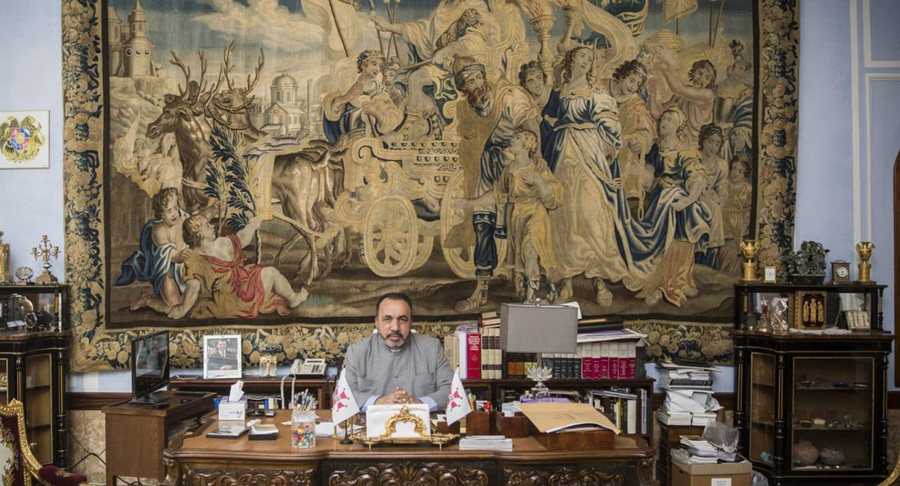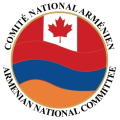Jerusalem Armenian Patriarchate’s lawsuit advances through Turkish courts
- (0)

By Harout Sassounian
The California Courier
While the lawsuit filed by the Catholicosate of Cilicia based in Antelias, Lebanon for the recovery of its former headquarters in Sis, Turkey has received wide publicity, another, just as important, lawsuit filed against Turkey is hardly known by the Armenian and international community.
This relatively unknown lawsuit was filed by the Armenian Patriarchate of Jerusalem seven years ago. During the last few years, the only news published by an Armenian newspaper in Istanbul has been about the various visits of Jerusalem Patriarch, Nourhan Manougian, to Turkey – regarding claims filed for the Patriarchate’s properties in that country. There have been no announcements by the Jerusalem Patriarchate and no interviews published in any Armenian media on this important lawsuit.
The first major news was published by the Turkish newspaper Hurriyet on October 2, regarding the Jerusalem Patriarchate’s lawsuit in Turkey. Hurriyet reported that the Constitutional Court – the highest court in Turkey – ruled, on September 12, that the lower Turkish court had violated the rights of the Armenian Patriarchate by denying proper access to the court to pursue its lawsuit (Article 36 of the Constitution). The Constitutional Court stated that the lower court had not sufficiently investigated the claims of the Armenian lawsuit.
The Armenian Apostolic See of St. James in Jerusalem had filed a lawsuit in an Ankara court on August 26, 2016, seeking the recovery of its properties in Turkey. The Turkish documents refer to the St. James Congregation of the Jerusalem Patriarchate as Mar Yakoub which is the Turkish translation of Saint James or Sourp Hagop. The two different names had caused confusion in the court as to the true identity of the ownership of these properties.
The Constitutional Court sent the lawsuit back to the Ankara court demanding that the lower court review the matter by conducting further investigations. If the lower court reconsiders its earlier rejection, it would open the door for the pursuit of the lawsuit through the Turkish court system.
Last week, I had the honor of speaking, by telephone, with Patriarch Nourhan Manougian regarding the status of the lawsuit. To my knowledge, this was the first interview that His Eminence has granted to a member of the media on this subject. He informed me that the Armenian Patriarchate in Jerusalem owned around 1,200 properties in Istanbul alone. The Patriarchate also owned dozens of other properties throughout Turkey, which were confiscated by the government during the period of the Armenian Genocide in 1915. Patriarch Manougian mentioned that a very large and valuable property owned by the Jerusalem Patriarchate in Yalova, Turkey was sold, in the 1950’s, to a Turk, by a Turkish Armenian who then fled to the United States. The Patriarch said he is interested in filing a lawsuit against the heirs of that Turkish Armenian individual.
On August 7, 1973, the Turkish General Directorate of Foundations initially included the Jerusalem properties on its list. When the decision was made to exclude these properties from the General Directorate of Foundations, the Jerusalem Patriarchate filed a lawsuit on July, 19, 2012. However, the Turkish court dismissed the lawsuit. Even though the Patriarchate won the appeal, the court rejected the decision!
The Constitutional Court stated that, at this point, there was no need to examine the right of ownership of the properties claimed by the Armenian Patriarchate of Jerusalem.
The Constitutional Court further ruled that “before the documents and records, particularly the administrative examinations of the legal matter are presented to the court, it should have been possible to clarify if there was a second Foundation or not. Without clarifying all these issues and without realizing all these necessary examinations, the rejection of the lawsuit has caused a great inconvenience to the applicant [the Patriarchate], and the interference in its right to apply to the court has been disproportionate. With this rejection, the 36th Article of the Constitutional Court is violated – defending one’s rights through trial.”
This is a critical lawsuit not only for the Armenian Patriarchate of Jerusalem but also for the entire Armenian nation. The sheer number of the 1,200 properties demanded by the lawsuit makes it highly valuable, particularly given their location in Istanbul, the most prominent Turkish city.
While it is too early to speculate about the final outcome of this lawsuit, it is probable that, should the Patriarchate regain the possession of some, if not all, of the 1,200 properties, the Turkish government may not allow the sale of these properties. Nor would they allow individuals to take the money made from selling the properties out of Turkey, permitting only the use of the properties or their lease to others. The generated income could then be used to support the Armenian schools and churches in Turkey.
However, should the lower court and the Constitutional Court rule against the Armenian Patriarchate, it can then file a lawsuit in the European Court of Human Rights.
The Catholicosate of Cilicia is in the process of following the same scheme, after its lawsuit with the European Court of Human Rights was rejected, because it had gone directly to the Constitutional Court of Turkey, sidestepping the lower Turkish court. The Catholicosate is now refiling its lawsuit with the lower court in Turkey.
The decision of the Turkish courts on these two lawsuits, followed by the European Court of Human Rights, if necessary, will reshape the agenda of the legal pursuit of the Armenian demands from Turkey, beyond its simple recognition of the Armenian Genocide.


















